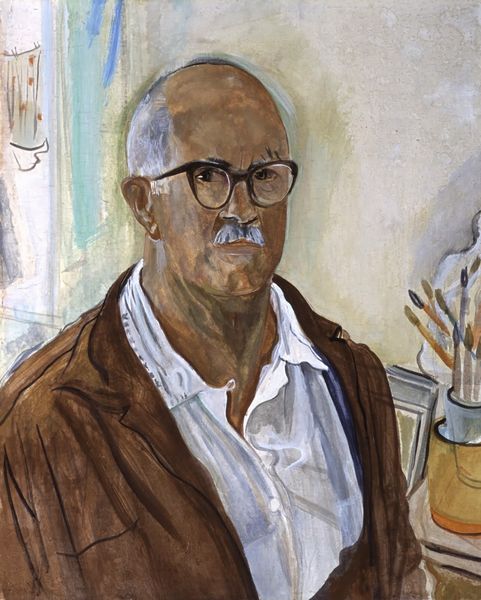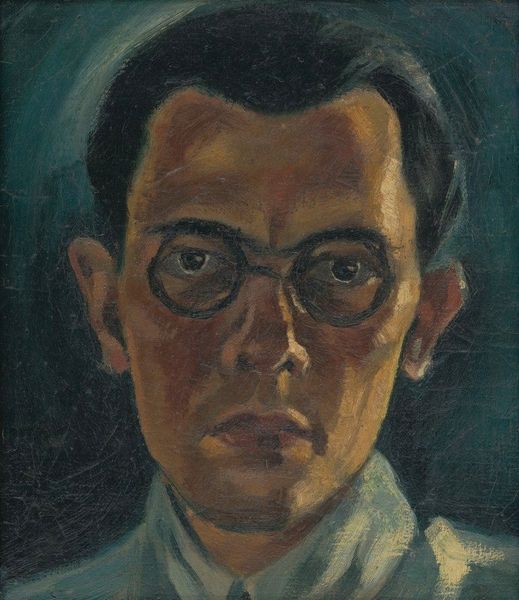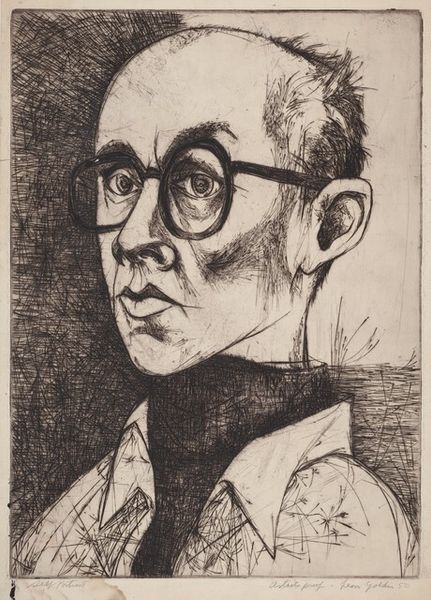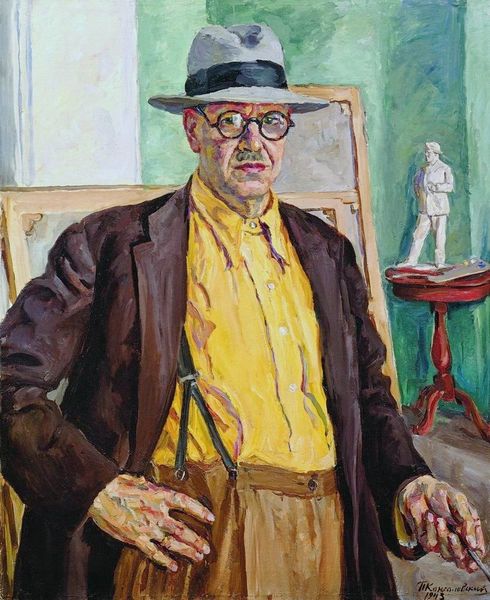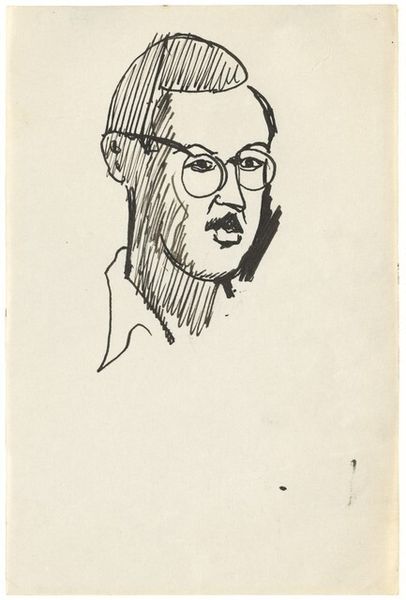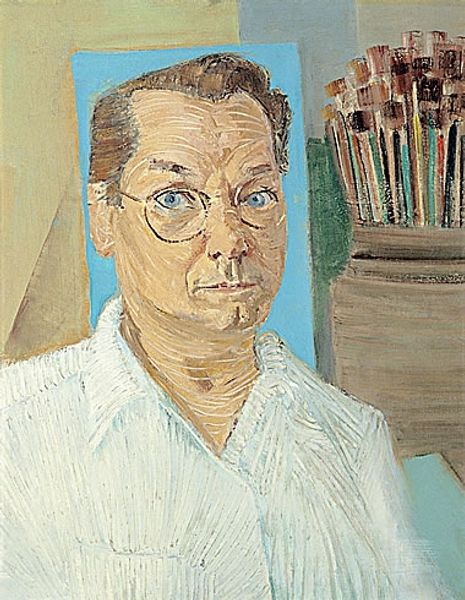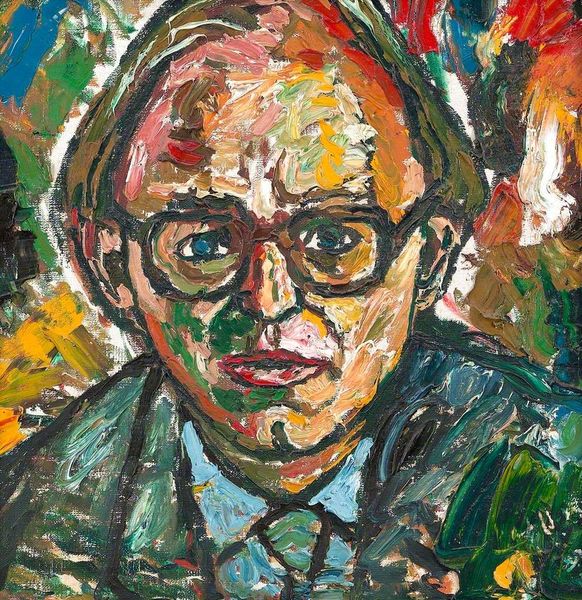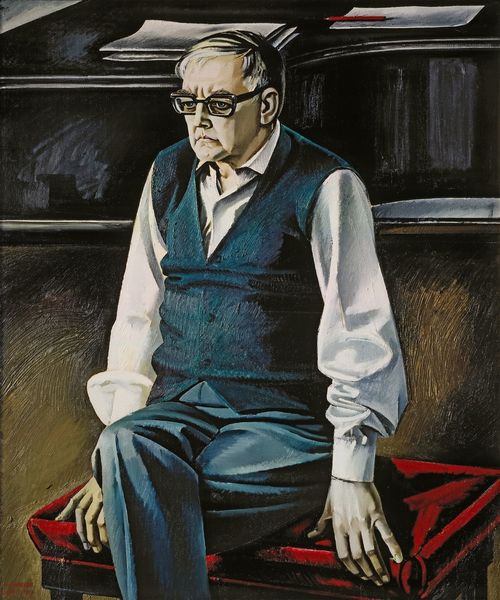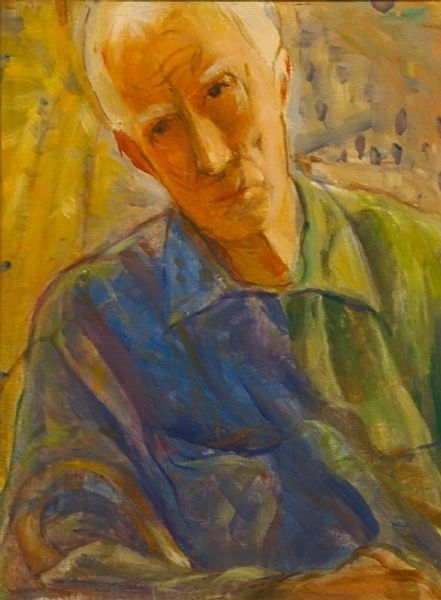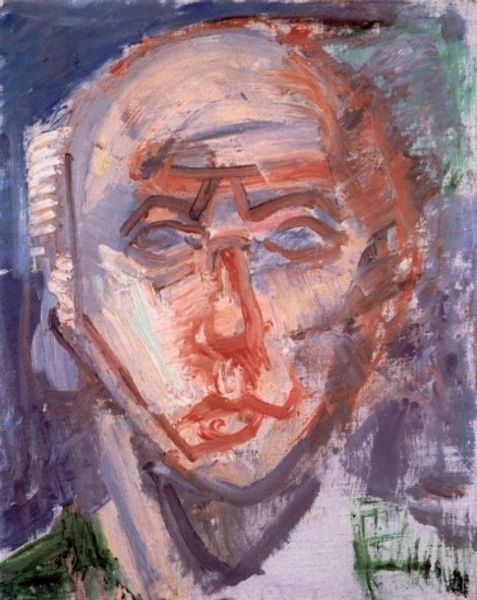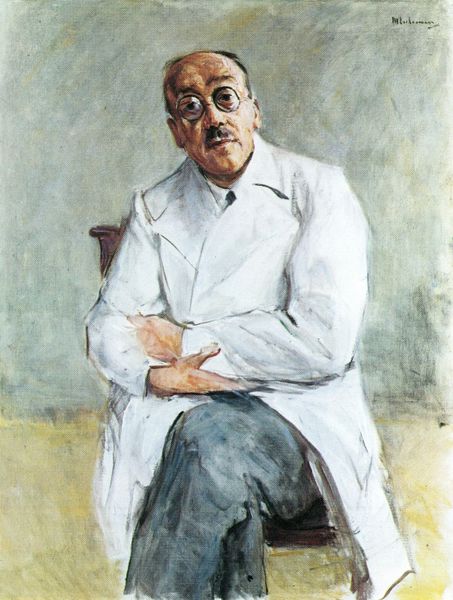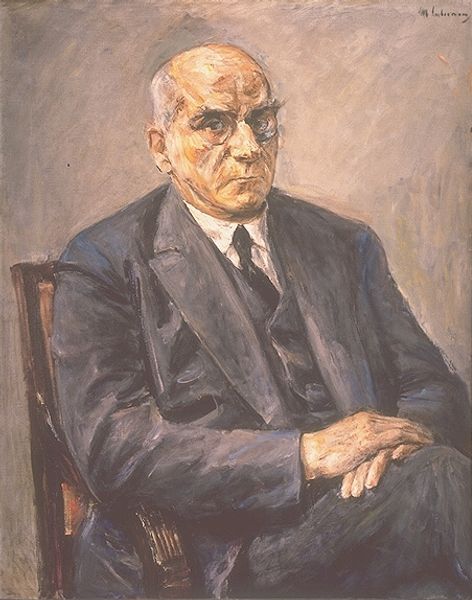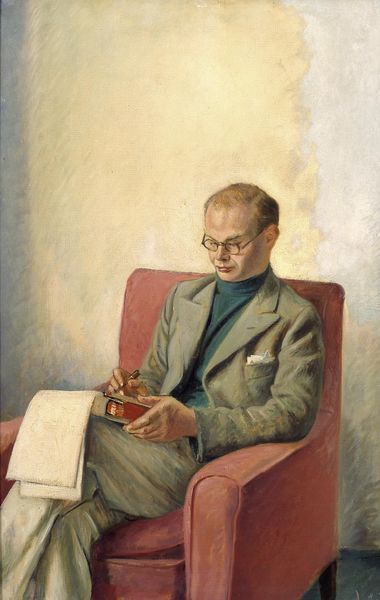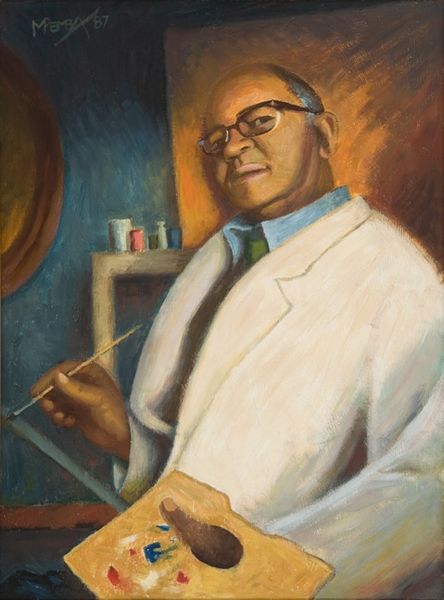
painting, oil-paint
#
portrait
#
self-portrait
#
painting
#
oil-paint
#
oil painting
#
portrait reference
#
portrait art
#
modernism
Copyright: Alberto da Veiga Guignard,Fair Use
Curator: Let’s take a look at "Auto Retrato," a self-portrait painted in oil on canvas by Alberto da Veiga Guignard in 1961. Editor: Immediately, I get a very dreamlike vibe. The hazy sky backdrop contrasting with those sharply defined glasses… It’s like looking at a memory through fogged lenses. Curator: It's fascinating how Guignard positions himself within this constructed landscape. Considering his history, particularly his upbringing amidst significant social stratification in Brazil, the "Auto Retrato" can be interpreted as an engagement with issues of representation and identity within the art market. Editor: Identity indeed! It almost feels like he's observing himself from the outside. Is it vulnerability, or detachment? Those eyes… they almost dare you to interpret them. It’s a face that both reveals and conceals. And that background… I’m getting strong echoes of a tropical setting… Palm trees suggesting a possible comment about land use and colonialism? Or maybe I'm pushing it... Curator: Not at all! Considering that Guignard lived in Minas Gerais and engaged extensively with painting landscapes reflecting local cultural practices, his aesthetic choices, like the rendering of the sky or vegetation, become indicative of his positioning relative to regional debates around Modernism in Brazil. It’s also important to note his specific brushstrokes. Notice how the layers seem deliberately applied—as if to build not just a portrait but also a kind of social commentary through the manipulation of paint. Editor: I love how that subtle palette enhances the quiet intensity. He's used these delicate pastel tones to achieve a profound expression of self-awareness. It almost reads like a melancholic poem. The composition invites endless reflection on what it meant for him to create such a strong personal artistic image amidst this shifting time. Curator: Exactly. Guignard really played with visual perception through paint and in doing so, gave an open look at the dialogue happening within Brazilian modernism and wider culture and identity production at the time. Editor: I’m now left musing on the simple but challenging premise of seeing—both the artist looking at himself and us, now looking back at him through time and context. Intriguing!
Comments
No comments
Be the first to comment and join the conversation on the ultimate creative platform.
